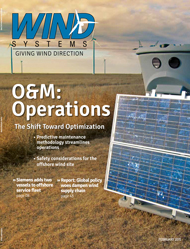“LA-LA-LA-LA-LA-LA-LA-LA-LA-LA-LA-LA-LA-LA-!”
If it had taken place in public, I would have been arrested… or at least tased. Thankfully, it wasn’t a psychotic episode or a temper tantrum left over from childhood.
My friend had neglected to declare “spoiler alert” before launching into a scene-by-scene discussion and critique of a movie I had not yet seen.
I spent a lot of time in movie theaters over the first two-thirds of my life. At 16, my first summer job involved shoveling popcorn at the local ten-screen. I continued to work at movie theaters until I graduated college.
It goes without saying then that I’ve seen a lot of movies — a lot of movies. Good movies, bad movies, decent movies, movies that just made you ask “Why?” But there are only a handful of truly great movies. I’ve never been able to decide on a single favorite. Instead, I maintain an ever-changing “Top Five list” in my mind.
Even though my taste varies from time to time, one film (Franchise, really. I cheat on the “five” part.) has never dipped below the third position.
This year marks the 30th Anniversary of Back to the Future. Appropriately enough, 2015 is also the year to which Marty McFly travels in the film’s sequel. Celebration of the milestone set social media, blogs, and TV ablaze with BTTF (as we abbreviate it in the fandom) nostalgia last month.
“Where’s my hoverboard?” memes cluttered news feeds. Rumors of “real-life” production of self-tying sneakers gained traction. Respected news oautlets published articles analyzing the film’s accuracy in predicting the future. (For the record, a true analysis wouldn’t be possible until October 21 of this year, but I digress.)
As a committed BTTFBFF (OK, I made that one up), I could only shake my head. What made these films great — at least for me — was the fact that they took the audience through a complex web of timelines, events, characters, and consequences, while still managing to tell a rich, cohesive narrative.
In other words, the filmmakers were storytellers, not prognosticators. They had the freedom to dream about what would happen in the future, but no way of knowing what would actually happen.
Here in the wind industry, we’re all too familiar with the reality that past performance is not an indicator of future results (to borrow a statement from the financial sector). And while no other industry could benefit more from a ride in Doc Brown’s time machine, we have to remain vigilant and dutiful in the present.
If we ignore that responsibility, we’ll likely repeat the mistakes of our past.
There have been plenty of plot twists thus far for the wind industry. Let’s write a blockbluster script.




































